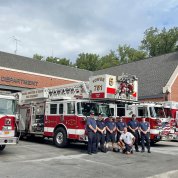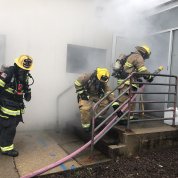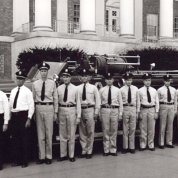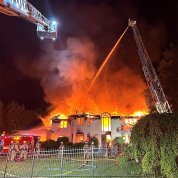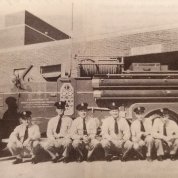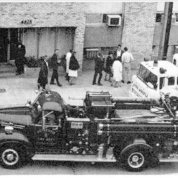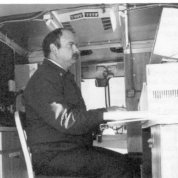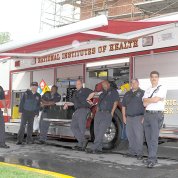Fire Department Celebrates 70th Anniversary
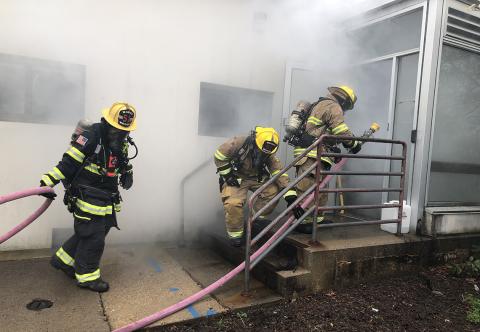
Photo: MAT CHIBBARO
In 1953, two milestones occurred on the NIH Bethesda campus: the opening of the Clinical Center (CC) and the inception of the NIH Fire Department (NIHFD). The two events were interrelated, as leadership saw the need for its own protection from fires and medical emergencies.
NIHFD has humble beginnings. Initially the department consisted of two full-time personnel and a single fire engine (equipped with water, a pump and hose lines) housed in the south campus maintenance area. This was augmented by a system of collateral-duty personnel from maintenance shops. These people volunteered for the additional duties and would be alerted by a bell system to report directly to an emergency while the engine responded from the fire station. This arrangement covered only the weekday working hours. At other times, the Bethesda Fire Department served NIH.
Within two years, the NIHFD staff increased to nine people working shifts and providing 24-hour coverage. In 1955, the first fire chief was named.
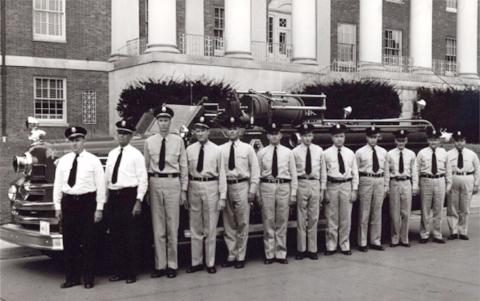
Photo: NIHFD
During its early years, in addition to providing emergency response, NIHFD handled fire prevention services. As buildings became more complicated and emergency needs increased, fire prevention duties were separated and are now handled by the NIH Division of the Fire Marshal with a full staff of engineers and inspectors. Fire reporting has been modernized to an automatic electronic system, which reports to NIH’s own 911 operations center under the NIH Division of Emergency Management.
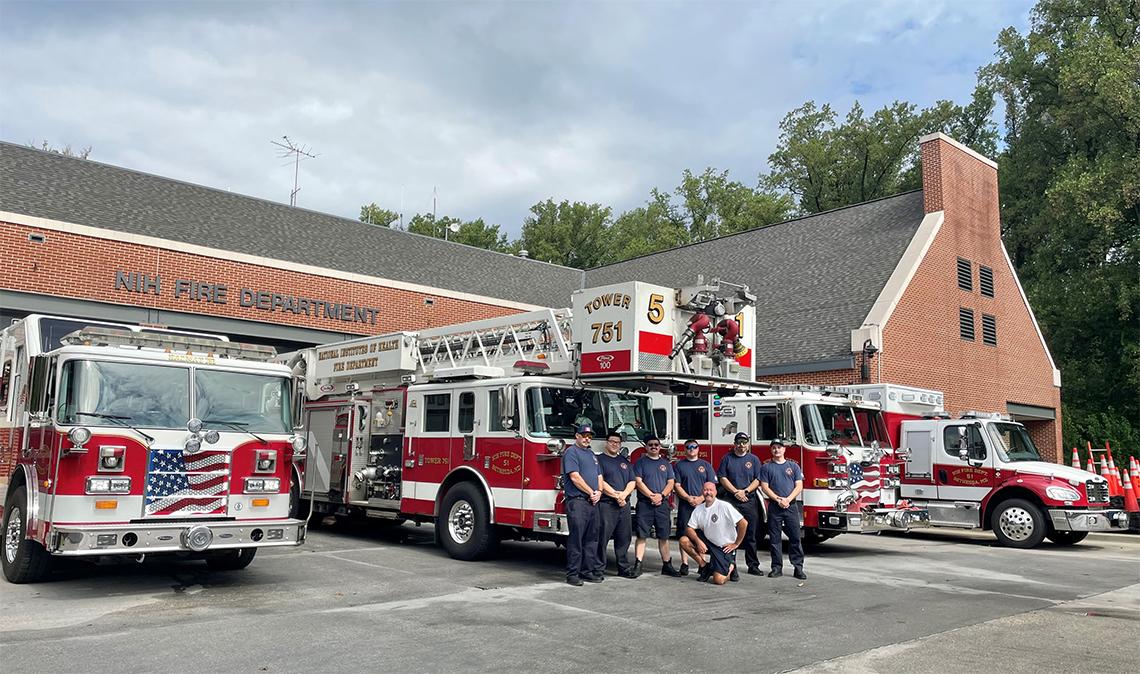
NIHFD ambulance service provides basic emergency medical care. With generous financial assistance from the Clinical Center, the department’s ambulance is now designed and equipped to conduct special transports of patients with highly infectious diseases. NIHFD’s uniquely outfitted vehicle was deployed in 2015 to transport an Ebola patient from a nearby airport to the CC for successful treatment.
Given NIH’s research facilities, NIHFD has become one of the area’s leading providers of hazardous materials (HAZMAT) emergency response. The department operates a fully equipped HAZMAT vehicle with certified technicians who mitigate such emergencies, which can range from simple spills to large-scale chemical incidents as well as unusual calls like when an unknown substance arrives in a mail package.
• Bldg. 6 attic fire
• Collapse of garage under construction
• Bldg. 10 fall resulting in a cardiac arrest
• Bldg. 10 lab fires prior to sprinkler installation
• Children’s Inn roof collapse
• Bldgs. 29A and 30 transformer fires
• Christmas Eve 2021: seven floods in Bldg. 10
• Bldg. 37 generator fire
• White powder attack on NIAID director
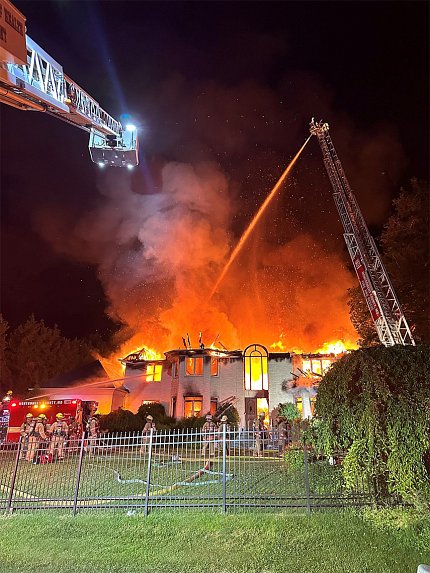
In addition to serving NIH’s Bethesda buildings and grounds, NIHFD responds to many off-campus calls, supporting the surrounding Montgomery County communities. The mutual aid agreement helps the county with resources and in turn makes county fire & rescue resources available to NIH for incidents requiring more manpower and equipment.
NIHFD also provides a staff member at its Rocky Mountain Lab campus in Montana. This specialist provides emergency medical care and initial HAZMAT capability augmented by the local fire department. He was recently awarded for saving the life of a person experiencing a cardiac emergency.
Over the years, the NIH Fire Department and the Montgomery County Fire & Rescue Squad have joined forces to respond to several emergencies:
• Rescue of triplets trapped in a Glen Echo house fire
• Rescue of two children in a Kensington fire
• Rescue and revival of a woman trapped in a Potomac house fire
• Bethesda trench rescue involving an electrocution
• Rescue at Silver Spring apartment building explosion
• Fatal fire in illegal tunnel under Bethesda house
Today the NIHFD has a staff of 37, many of whom work in rotating 48-hour shifts. Last year, responses totaled 2,456—approaching seven calls per day.
Constantly modernizing, the department is now equipped and trained to provide tactical medical care in the event of a hostile incident, skilled to work alongside the NIH Police Department—tremendous progress since the first days of two firefighters and an engine.

